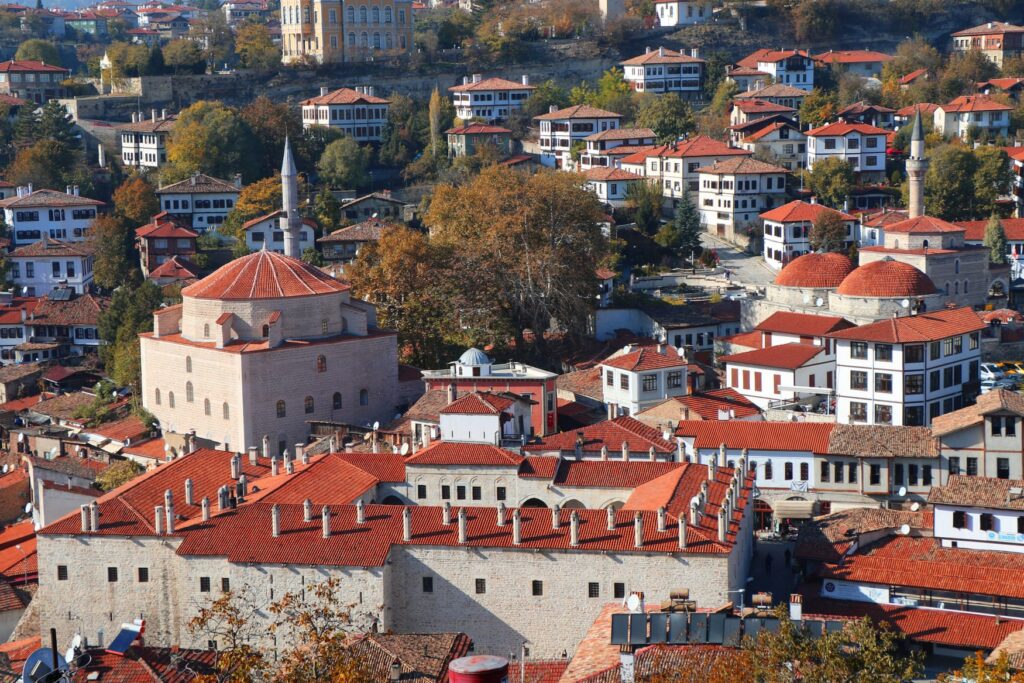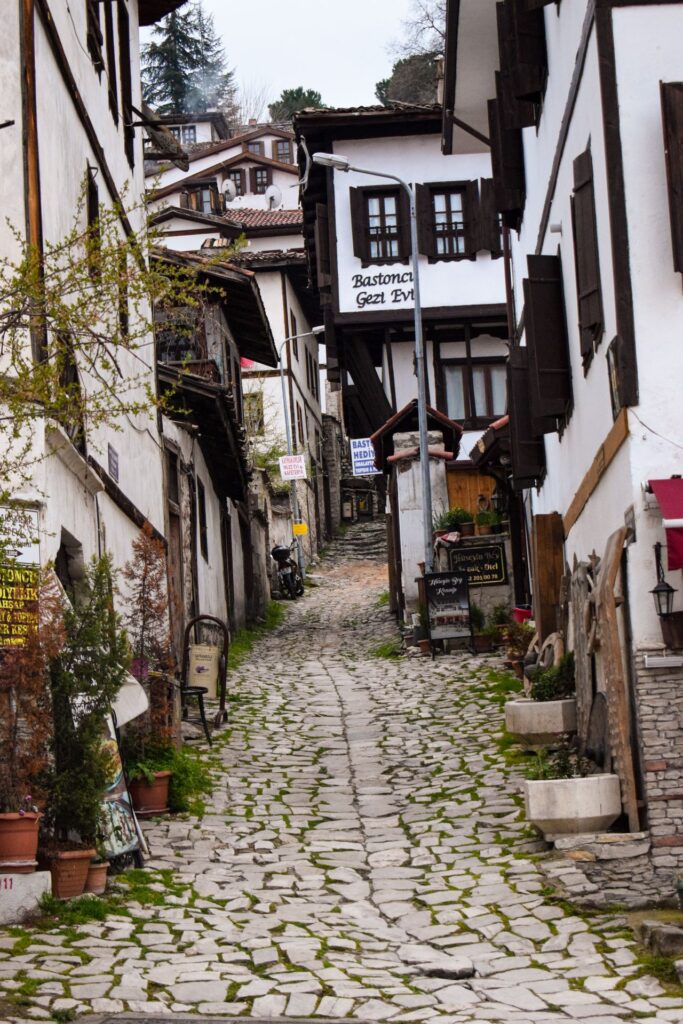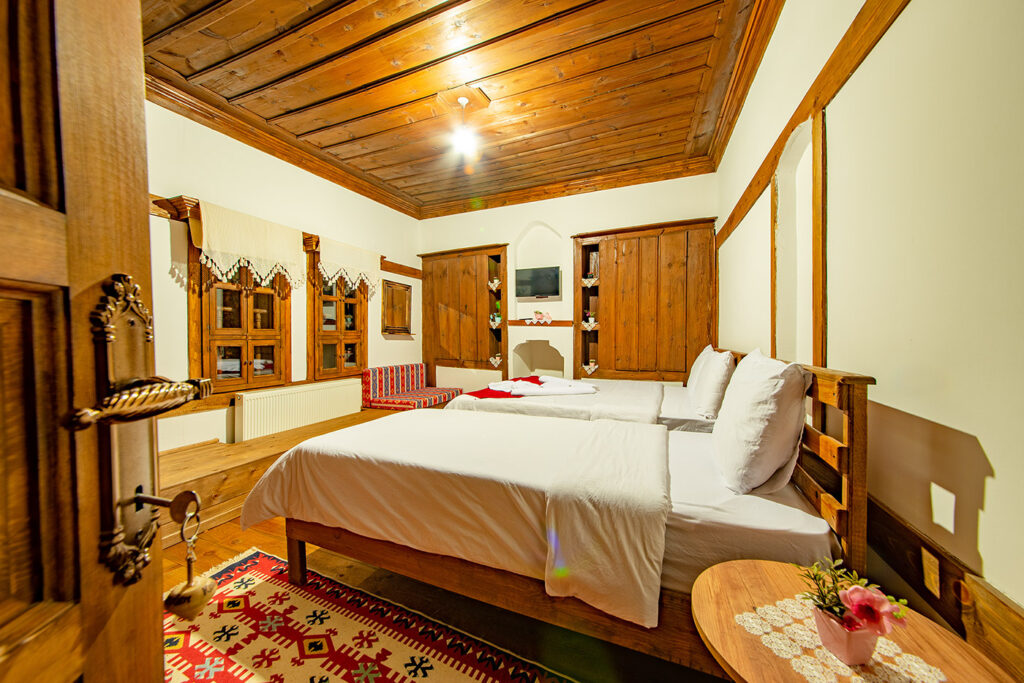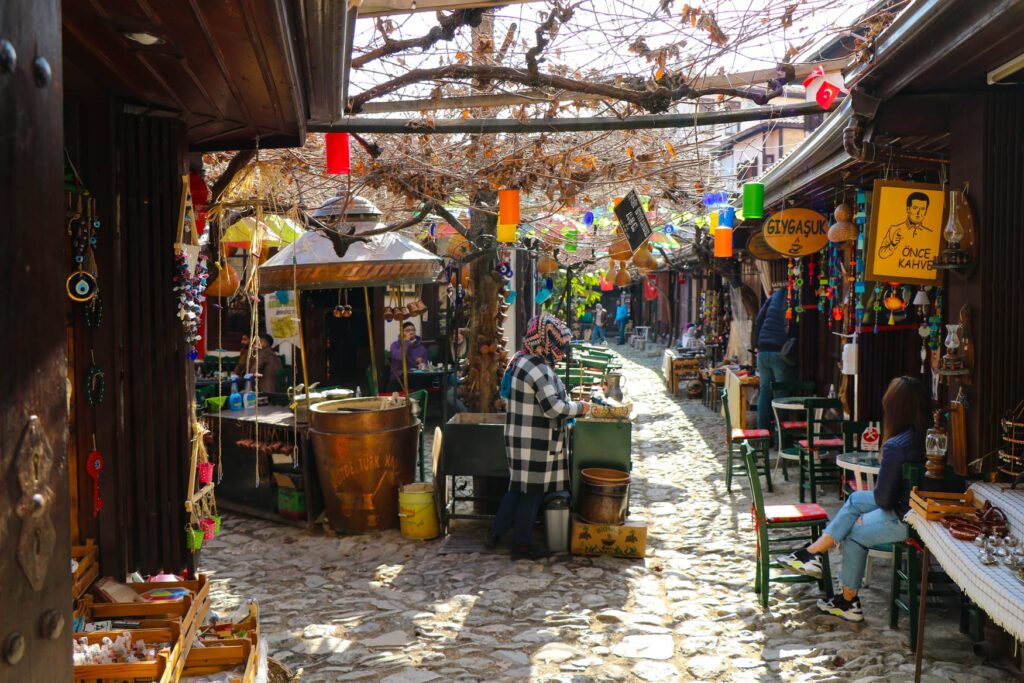Safranbolu is under conservation since 1975, and entered the UNESCO World Heritage List in 1994. The city’s name is derived from the rare saffron (Safran) plant growing in the region. Having the most outstanding examples ofOttoman architecture, Safranbolu is regarded one of mankind’s commonly shared treasures. The castle, the hamams, the bazaars, inns, mosques, the old government house, and its unique and civil architectural buildings are the major places of interest for the visitors of Safranbolu.
Hıdırlık Hill
Itis an important place where the first Turks settled, held their rain prayer, and celebrated Hıdırellez. For those who visit Safranbolu for the first time, it is recommended to have a full view of the whole city from the Hıdırlık Hill.
The Safranbolu Houses
Safranbolu enjoyed a great architectural development during the 17th century, which also continued in the 18th century. Encircling Safranbolu’s historic buildings, the Safranbolu houses in the centre of the district consist of about 2,000 traditional Turkish houses, which were built in the 18th, 19th, and the beginning of the 20th century. About 800 of these houses are under legal preservation. The houses are grouped in two separate sections of Safranbolu. The first section is the so-called “Şehir” section, which is used during winter, and the second one is known as the “Bağlar”, which is used during summer. The Safranbolu houses are the most beautiful examples of Ottoman civil architecture preserved until our era. The mansions, which are also under preservation, provide restaurant and accommodation services.
City History Museum
Built during 1904-1906, the building suffered damage during a fire in 1976. After being restored, it serves as the City History Museum since 2006. The City History Museum is a cultural unit established with the aim to collect and preserve all kind of information, documents, objects, visual material, audio and video recordings in order to promote and present the cultural, historical and social richness of the city, and to facilitate temporary and permanent exhibitions based on these data.
Arasta Bazaar
Suited in the Arasta Street, the Yemeniciler Bazaar (the shoemaker’s market) in Safranbolu is one of the oldest and most interesting places to visit. The bazaar consists of 48 adjacent wooden stores, offering indigenous handcrafted items, souvenirs and the possibility to relax in various coffee shops.
Clock Tower
It was built in the 18th century, whereby the clock inside the tower was imported from England by the Grand Vizier at the time.
Cinci Inn and Cinci Hamam
Dated back to 1645, the Cinci Inn and the Cinci Hamam(Cinci Bath) are among the most important historical structures of the city. The bathhouse aims at offering Turkish hamam culture to tourism in its best form. The Cinci Hamamı consists of separate sections for men and women, where both sections are architecturally identical.
Turkish Coffee Museum
This is the museum that tells the story of Turkish coffee utensils. They were added to the UNESCO World Heritage List in 2013, and carried their “40-years-worth” of memories over centuries until our times. In the Museum you will find the cup from which Mustafa Kemal Atatürk sipped his coffee, centuries old coffee-mills, the mortars and coffee pots as well as covered and preserved coffee, and many special items which will shed light on the Turkish coffee culture.
Demirciler Bazaar
It is located in the Safranbolu Old Bazaar and has maintained its old Ottoman appearance. The bazaar is ideal for taking photos, and the hand-fashioned copper cookware is especially remarkable.
Köprülü Mehmet Paşa Mosque
The mosque was built by one of the most important statesmen of the Ottoman Empire, Grand Vizier Köprülü Mehmet Paşa, in 1661/1662.
The Sundial
Itis in the courtyard of the Köprülü Mehmet Paşa Mosque and surrounded by iron bars and placed on a stone pedestal. It shows the time during the day in Arabic digits, and is calibrated in 10-minute intervals. The sun casts the shadow of the triangular-shaped brass gnomon, which is fixed on marble and allows reading the correct time.
Safranbolu Nomad Village
This “Museum Village” is 11km away from Safranbolu and can be reached by highway. The Ministry of Culture and Tourism placed the village under conservation protection in 1997, as it is a real Turkoman Village (Yörük Köyü) and also because of its stunning historical buildings. It is a small model of Safranbolu, and has 93 registered monuments. Its history is dated back to the 16th century.






